Table of Contents
Preface
Audience of This Book
Organization of the Material
Conventions Used in This Book
Using Code Examples
Legal Disclaimer
Safari® Books Online
How to Contact Us
Chapter 1. Everything You Know Is Wrong
The Myth of a Monoculture
The iOS Security Model
Components of the iOS Security Model
Device security
Data security
Network security
Application security
Storing the Key with the Lock
Passcodes Equate to Weak Security
Forensic Data Trumps Encryption
External Data Is at Risk, Too
Hijacking Traffic
Data Can Be Stolen...Quickly
Trust No One, Not Even Your Application
Physical Access Is Optional
Summary
Part I. Hacking
Chapter 2. The Basics of Compromising iOS
Why It’s Important to Learn How to Break Into a Device
Jailbreaking Explained
Developer Tools
End User Jailbreaks
Jailbreaking an iPhone
DFU Mode
Tethered Versus Untethered
Compromising Devices and Injecting Code
Building Custom Code
Analyzing Your Binary
Basic disassembly
Listing dynamic dependencies
Symbol table dumps
String searches
Testing Your Binary
Daemonizing Code
Deploying Malicious Code with a Tar Archive
Grabbing signed binaries
Preparing the archive
Deploying the archive
Deploying Malicious Code with a RAM Disk
Build a custom launchd
Breakdown of launchd example
Building a RAM disk
Booting a RAM disk
Troubleshooting
Exercises
Summary
Chapter 3. Stealing the Filesystem
Full Disk Encryption
Solid State NAND
Disk Encryption
Filesystem Encryption
Protection classes
Where iOS Disk Encryption Has Failed You
Copying the Live Filesystem
The DataTheft Payload
Disabling the watchdog timer
Bringing up USB connectivity
Payload code
Customizing launchd
Preparing the RAM disk
Imaging the Filesystem
Copying the Raw Filesystem
The RawTheft Payload
Payload code
Customizing launchd
Preparing the RAM disk
Imaging the Filesystem
Exercises
The Role of Social Engineering
Disabled Device Decoy
Deactivated Device Decoy
Malware Enabled Decoy
Password Engineering Application
Summary
Chapter 4. Forensic Trace and Data Leakage
Extracting Image Geotags
Consolidated GPS Cache
SQLite Databases
Connecting to a Database
SQLite Built-in Commands
Issuing SQL Queries
Important Database Files
Address Book Contacts
Putting it all together
Address Book Images
Google Maps Data
Calendar Events
Call History
Email Database
Mail attachments and message files
Notes
Photo Metadata
SMS Messages
Safari Bookmarks
SMS Spotlight Cache
Safari Web Caches
Web Application Cache
WebKit Storage
Voicemail
Reverse Engineering Remnant Database Fields
SMS Drafts
Property Lists
Important Property List Files
Other Important Files
Summary
Chapter 5. Defeating Encryption
Sogeti’s Data Protection Tools
Installing Data Protection Tools
Building the Brute Forcer
Building Needed Python Libraries
Extracting Encryption Keys
The KeyTheft Payload
Customizing Launchd
Preparing the RAM disk
Preparing the Kernel
Executing the Brute Force
Decrypting the Keychain
Decrypting Raw Disk
Decrypting iTunes Backups
Defeating Encryption Through Spyware
The SpyTheft Payload
Daemonizing spyd
Customizing Launchd
Preparing the RAM disk
Executing the Payload
Exercises
Summary
Chapter 6. Unobliterating Files
Scraping the HFS Journal
Carving Empty Space
Commonly Recovered Data
Application Screenshots
Deleted Property Lists
Deleted Voicemail and Voice Recordings
Deleted Keyboard Cache
Photos and Other Personal Information
Summary
Chapter 7. Manipulating the Runtime
Analyzing Binaries
The Mach-O Format
Introduction to class-dump-z
Symbol Tables
Encrypted Binaries
Calculating Offsets
Dumping Memory
Copy Decrypted Code Back to the File
Resetting the cryptid
Abusing the Runtime with Cycript
Installing Cycript
Using Cycript
Breaking Simple Locks
Replacing Methods
Trawling for Data
Instance variables
Methods
Classes
Logging Data
More Serious Implications
Personal data vaults
Payment processing applications
Electronic banking
Exercises
SpringBoard Animations
Call Tapping...Kind Of
Making Screen Shots
Summary
Chapter 8. Abusing the Runtime Library
Breaking Objective-C Down
Instance Variables
Methods
Method Cache
Disassembling and Debugging
Eavesdropping
The Underlying Objective-C Framework
Interfacing with Objective-C
Malicious Code Injection
The CodeTheft Payload
Injection Using a Debugger
Injection Using Dynamic Linker Attack
Full Device Infection
Summary
Chapter 9. Hijacking Traffic
APN Hijacking
Payload Delivery
Removal
Simple Proxy Setup
Attacking SSL
SSLStrip
Paros Proxy
Browser Warnings
Attacking Application-Level SSL Validation
The SSLTheft Payload
Hijacking Foundation HTTP Classes
The POSTTheft Payload
Analyzing Data
Driftnet
Building
Running
Exercises
Summary
Part II. Securing
Chapter 10. Implementing Encryption
Password Strength
Beware Random Password Generators
Introduction to Common Crypto
Stateless Operations
Stateful Encryption
Master Key Encryption
Geo-Encryption
Geo-Encryption with Passphrase
Split Server-Side Keys
Securing Memory
Wiping Memory
Public Key Cryptography
Exercises
Chapter 11. Counter Forensics
Secure File Wiping
DOD 5220.22-M Wiping
Objective-C
Wiping SQLite Records
Keyboard Cache
Randomizing PIN Digits
Application Screenshots
Chapter 12. Securing the Runtime
Tamper Response
Wipe User Data
Disable Network Access
Report Home
Enable Logging
False Contacts and Kill Switches
Process Trace Checking
Blocking Debuggers
Runtime Class Integrity Checks
Validating Address Space
Inline Functions
Complicating Disassembly
Optimization Flags
Stripping
They’re Fun! They Roll! -funroll-loops
Exercises
Chapter 13. Jailbreak Detection
Sandbox Integrity Check
Filesystem Tests
Existence of Jailbreak Files
Size of /etc/fstab
Evidence of Symbolic Linking
Page Execution Check
Chapter 14. Next Steps
Thinking Like an Attacker
Other Reverse Engineering Tools
Security Versus Code Management
A Flexible Approach to Security
Other Great Books

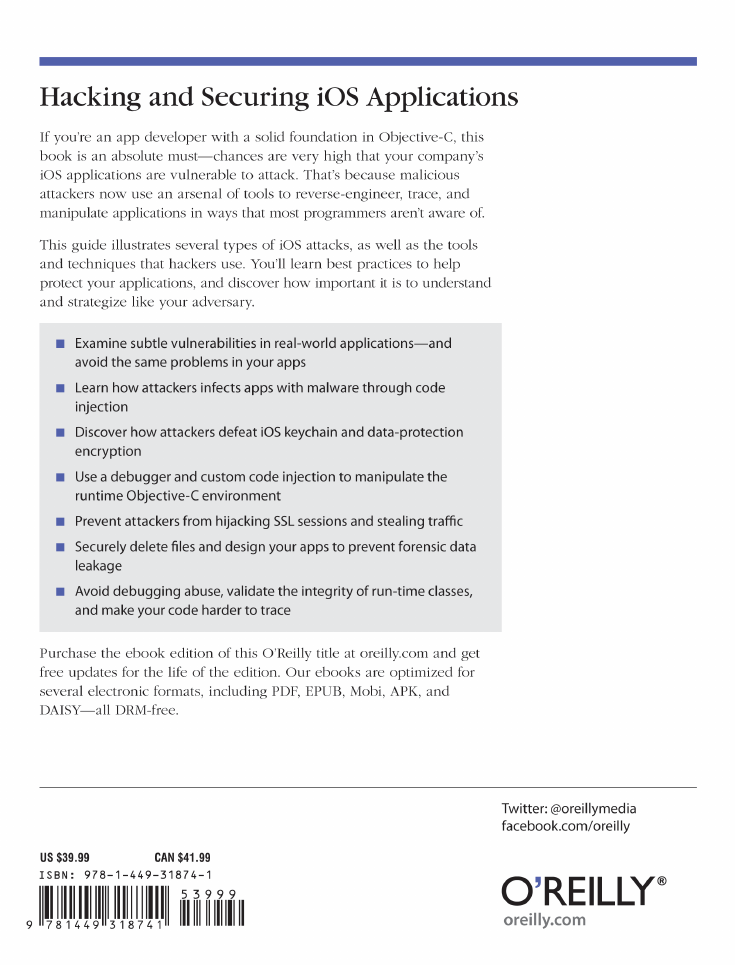
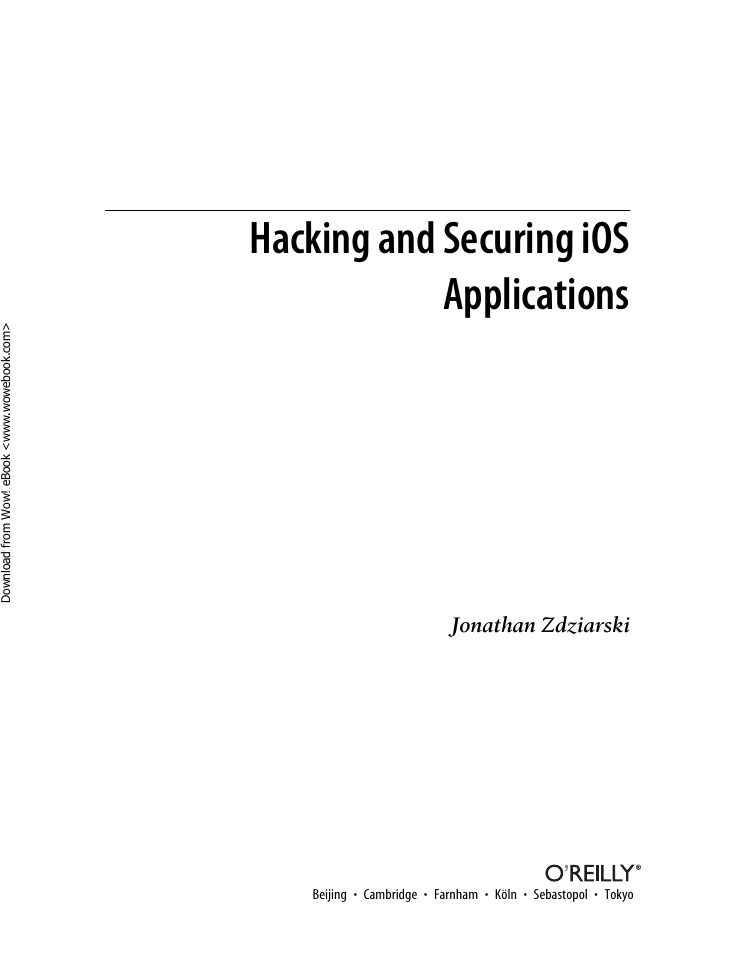
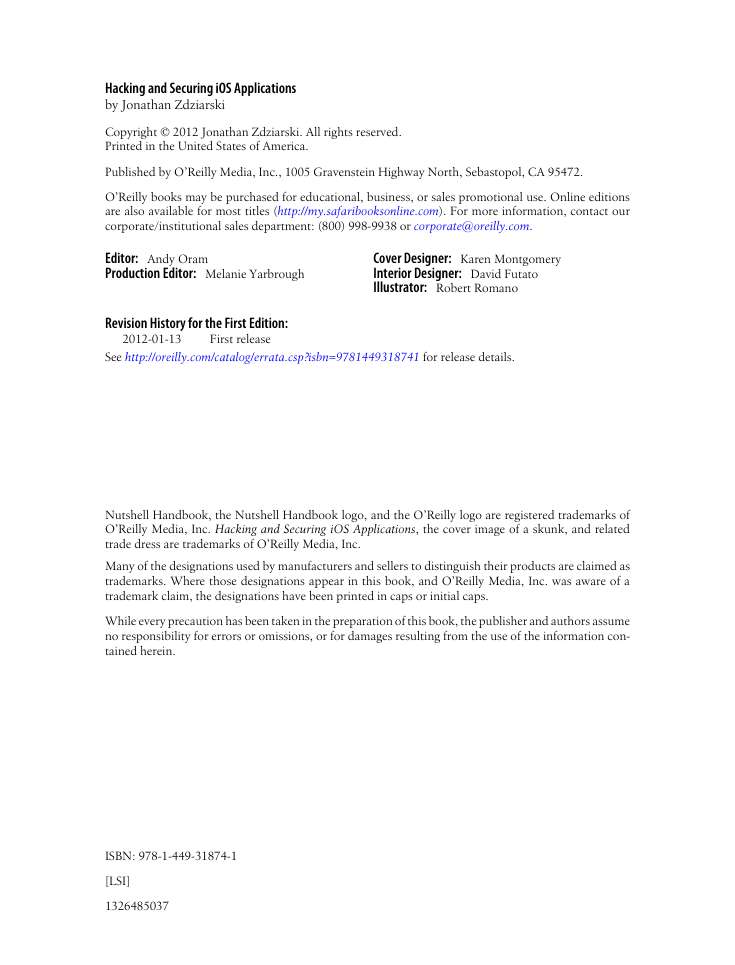


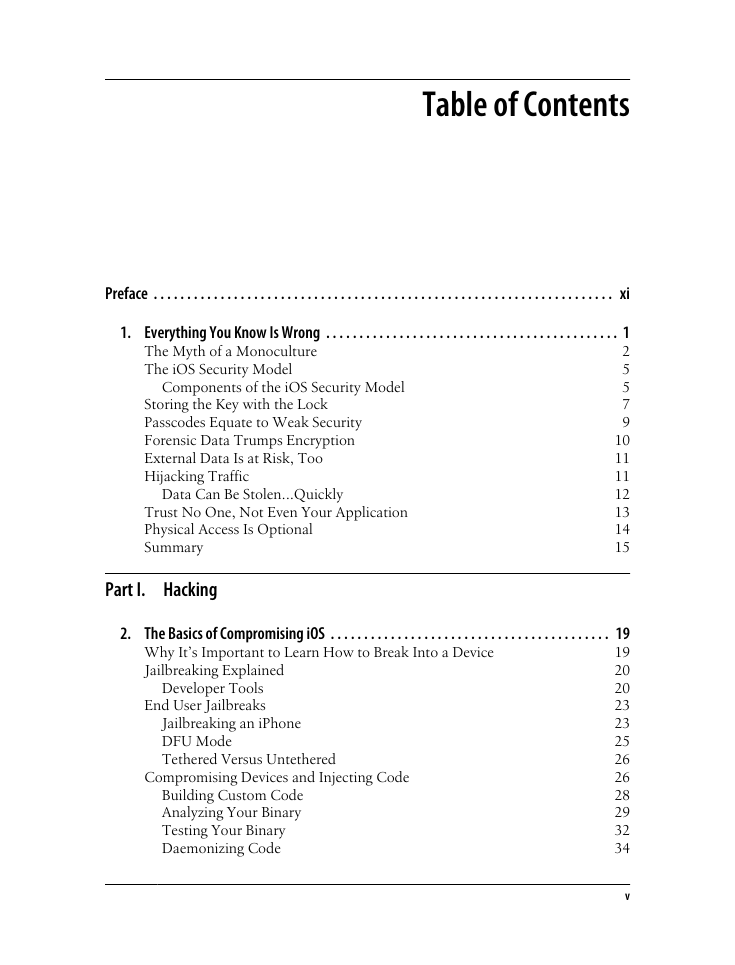
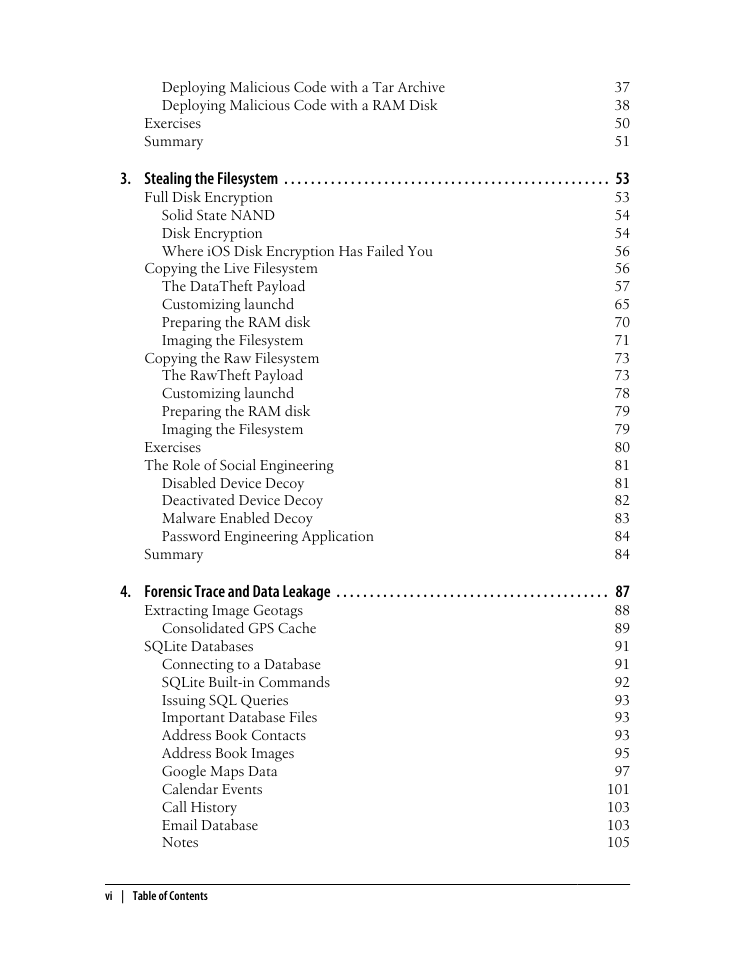








 2023年江西萍乡中考道德与法治真题及答案.doc
2023年江西萍乡中考道德与法治真题及答案.doc 2012年重庆南川中考生物真题及答案.doc
2012年重庆南川中考生物真题及答案.doc 2013年江西师范大学地理学综合及文艺理论基础考研真题.doc
2013年江西师范大学地理学综合及文艺理论基础考研真题.doc 2020年四川甘孜小升初语文真题及答案I卷.doc
2020年四川甘孜小升初语文真题及答案I卷.doc 2020年注册岩土工程师专业基础考试真题及答案.doc
2020年注册岩土工程师专业基础考试真题及答案.doc 2023-2024学年福建省厦门市九年级上学期数学月考试题及答案.doc
2023-2024学年福建省厦门市九年级上学期数学月考试题及答案.doc 2021-2022学年辽宁省沈阳市大东区九年级上学期语文期末试题及答案.doc
2021-2022学年辽宁省沈阳市大东区九年级上学期语文期末试题及答案.doc 2022-2023学年北京东城区初三第一学期物理期末试卷及答案.doc
2022-2023学年北京东城区初三第一学期物理期末试卷及答案.doc 2018上半年江西教师资格初中地理学科知识与教学能力真题及答案.doc
2018上半年江西教师资格初中地理学科知识与教学能力真题及答案.doc 2012年河北国家公务员申论考试真题及答案-省级.doc
2012年河北国家公务员申论考试真题及答案-省级.doc 2020-2021学年江苏省扬州市江都区邵樊片九年级上学期数学第一次质量检测试题及答案.doc
2020-2021学年江苏省扬州市江都区邵樊片九年级上学期数学第一次质量检测试题及答案.doc 2022下半年黑龙江教师资格证中学综合素质真题及答案.doc
2022下半年黑龙江教师资格证中学综合素质真题及答案.doc